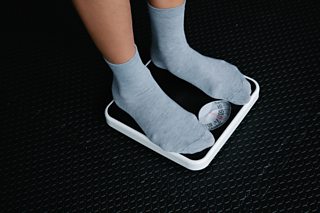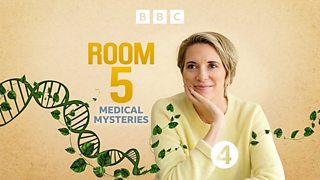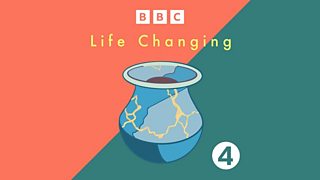Body Dysmorphic Disorder: “It’s a serious disorder but can go so unseen”
From the outside, Tilly seemed to have life figured out. She had a job in high-end fashion; lived on a houseboat that she’d lovingly renovated herself. But inside, she was struggling. Ever since school, she had felt wrong in her body. Then, a therapist fitted the pieces of the puzzle together and gave Tilly a diagnosis that explained the way her brain is wired. Now her challenge is to re-wire it, and change her future…
In Room 5 – the series about life-changing diagnoses – Helena Merriman speaks to Tilly about living with body dysmorphic disorder, and changing her relationship with her body for the better.
“I felt different to my friends”
The first time Tilly remembers feeling that she looked wrong, was at school.
“My father is Eritrean and my mum is white British. I felt different to my friends,” she says. “I felt so jealous of their pretty, sleek blonde hair and blue eyes. I never minded that my skin was brown, it was just the frizziness of my hair and feeling that my body wasn’t somehow the same shape as Caucasian girls. I remember some of the girls saying that I had pubic hair on my head.”
The 13-year-old remembers lying on the grass with a friend, and noticing how loose the other girl’s trousers were. “There was space there. And I was just fascinated by that because I felt that that would never happen with my body. That I was always filling the space of all of my clothes with my fatness.”
The moment passed. But it was a train of thought she’d return to again and again.
“I felt that my face looked wrong”
Years later, at an under-18s nightclub, Tilly wore a halter neck top and short skirt. “I just felt horrendous and I felt so self-conscious about my tummy and I felt that my face looked wrong and my hair looked wrong,” she recalls.
Her anxiety began to have a physical effect: “I stiffen up, I can’t smile. Secretly I just want someone to fancy me but of course I can’t make that happen when I’m feeling like that. Then my skin starts to feel so sensitive, it’s like a sharp sensation.” It was “overwhelming,” she states.
That night, after brushing her teeth in the mirror, terrible thoughts ran through her mind: “You’re disgusting. No one could ever love that. What’s wrong with you? Why are you so gross compared with everyone else?”

"Tilly's convinced people are staring at her"
Helena and Tilly explain the thoughts and feelings she experiences.
“My body’s connection with my mind goes completely out of sync”
Ten years later, living in her London narrowboat, Tilly looked in the mirror and still hated what she saw. Her breath would quicken, her body would become tense, and she became hot and flustered.

I felt so scared of being a burden to my friends and family, so I really isolated myself. No one wants a sad friend.
When she walked along the canal to her job at a high-end fashion company, she was convinced people were staring at her. She had intrusive thoughts: “That I looked gross. Or that I’d worn the wrong thing, or that my shoes were too ugly or my face was too ugly,” she says.
With the thoughts came a strong physical sensation: “Not only does everything feel super awkward – my body’s connection with my mind goes completely out of sync. So, if I want to smile at the person who’s served me coffee, I have to tell myself to smile and then the smile feels forced.”
“The thoughts I was having at night were so dark”
When she arrived at work, she didn’t tell anyone what she was going through. “I was trying to get to the end of the day and get somewhere safe. And safe would just be somewhere where I was completely alone.”
And so finally, 15 years after Tilly started having these thoughts about her appearance, she sought help. Tilly met clinical psychologist Dr Mairi Crombie, who – at one of their weekly sessions – asked Tilly to draw a self-portrait.
“It’s really hard, because it’s such an amorphous shape or thing that I thought I was,” says Tilly. “Oh God, it was just so ugly.”
Finally, Tilly is diagnosed with Body Dysmorphic Disorder
Shocked by Tilly’s drawing, Mairi suggests that she might have Body Dysmorphic Disorder (BDD) – a condition where the sufferer is completely preoccupied with their appearance, and imagined defects, which can lead to fear, distress or anxiety.
Tilly doesn’t buy it. “I can’t believe that I’ve got it because I just think I’m actually ugly,” says Tilly. “It’s almost scary or embarrassing to think about saying 'yes, I’ve got it', because then what if the other version is true? People are going to laugh at me.”
And so Mairi’s job is to convince Tilly that the diagnosis is correct. She explains that Tilly is walking down a path that “has become so trodden and old and used” and that “coming into therapy is a bit like trying to find a new path.”
Tilly tries techniques that Mairi teaches her. One is systematically looking at different parts of her body without judgement. “You’re learning what you actually look like,” says Tilly, “rather than what you think you look like.”
When she walks along the canal to work, conscious of the gaze of passers-by, she tries refocusing her attention from her appearance to the world around her. It works: she feels calm and “less erratic”.
Then Britain goes into lockdown
When the pandemic strikes, Tilly finds herself stuck on her own on her boat. She takes comfort in food. “I’ve always been a bit of a binge eater. And I put on a tiny bit of weight and it just absolutely floored me,” says Tilly.
One evening, after eating supper, Tilly makes herself sick. “It gave me a sense of control in a very crazy, out of control situation.” And over the next few months, Tilly does this again and again. She starts retreating from the world. “I felt so scared of being a burden to my friends and family, so I really isolated myself. No one wants a sad friend.”
Then one afternoon, Tilly joins a Zoom for a BDD support group. Men and women of all ages talk about their lives. The group’s facilitators have had BDD and come out the other side. “We could finish each other’s sentences,” says Tilly, “so you feel so deeply understood.”
When lockdown ends Tilly starts going out again. One night at a music festival, she sits on her friend’s shoulders as they dance. She’s having a great time – until she sees the slight curve of her tummy and feels “that old panic reaction kicking in.” But very quickly she says “let’s take a step back. You’re really having a happy time. You look absolutely fine.”
“It’s a really serious disorder but it can go so unseen”
“For a long time, it felt like it didn’t make much difference, having this diagnosis,” Tilly admits. “Because I wasn’t seeing any change yet. I was still struggling every day.” But the diagnosis enabled her to “slowly start to find the support groups” and gave her a language to discuss her feelings.
She realises now she’s lucky. “I have sadly been aware of real casualties from BDD. There were people who have experienced being housebound for numbers of years, and there were people in the support group who are no longer with is. It’s a really serious disorder but it can go so unseen.”
Now, she’s keen to share her story with others. “Where I’m at now, with the recovery, is acknowledging how difficult it was.” She’s living a “vastly different” life to the one before. In the same way that Tilly rewired her canal boat, she spent hours practising the tools that Mairi gave her, and she’s gradually subverted the neural pathways she’s travelled since she was a child.
“I’ve actually made some of those new paths and I’m walking them every day, and they’re not going anywhere,” says Tilly. “In fact, they just feel like they’re getting better and bigger and it’s great.”
Information and support on issues relating to this article:
More from √€—ø¥´√Ω Radio 4
-
![]()
Listen to Room 5
Stories of real-life medical mysteries with Helena Merriman.
-
![]()
Life Changing
Extraordinary stories of life's turning points.
-
![]()
A Thorough Examination with Drs Chris and Xand
Medical series with doctors Chris and Xand van Tulleken.
-
![]()
Why Do We Do That?
Ella Al-Shamahi investigates the origins of everyday human habits and behaviour.





